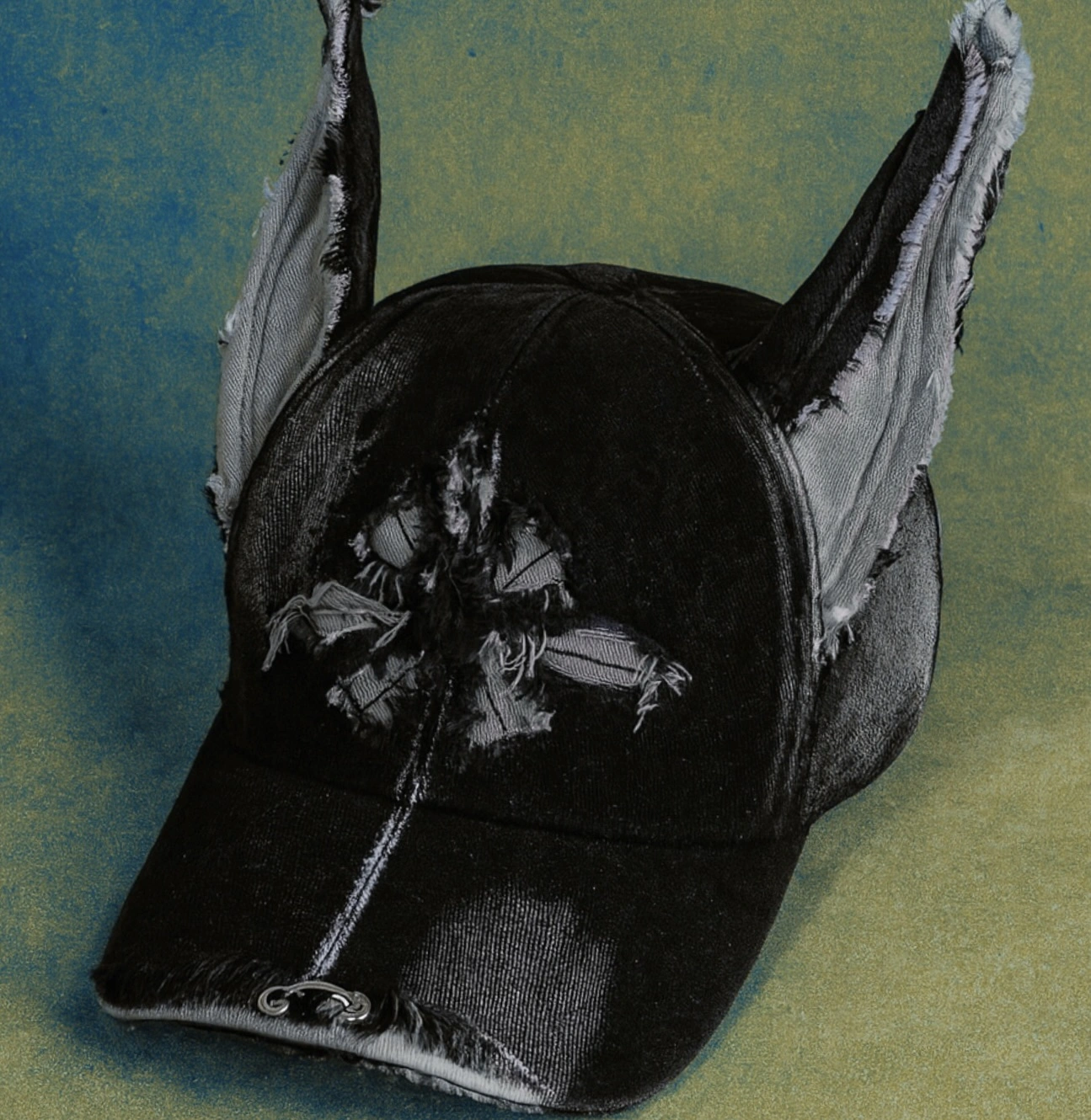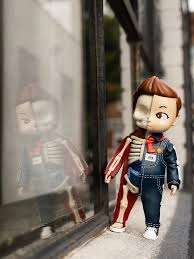The Air Jordan book by Assouline is not simply a printed object—it’s an act of cultural preservation. Bound in a black embossed cover with the iconic red Jumpman at its center, this 800-page tome is a monument to the alchemy between sport, design, and storytelling. Published in 2025, it extends beyond its luxurious physicality to embody a history that began on the hardwood courts of Chicago and expanded into the global consciousness of streetwear, music, and contemporary art.
The weight of the book, both literal and symbolic, recalls the lineage of a phenomenon that has transcended sneakers. Michael Jordan’s career redefined athletic excellence, but his eponymous brand redefined the very idea of cool. Through Assouline’s meticulous curation, Air Jordan becomes not just an archive—it is scripture for a new kind of mythology, where craftsmanship meets aspiration and every shoe release becomes an epoch.
design
True to Assouline’s legacy, the book is a design object in its own right. The black cover’s intricate embossing feels like a luxury accessory; it mirrors the tactile allure of the sneakers it commemorates. The spine, gilded with AIR JORDAN in bold typography, sits with an architectural presence—an object meant not only to be read but displayed.
Inside, the pages move between documentary precision and visual seduction. Each model—from the AJ1 to the latest futuristic silhouettes—is presented with archival photography, sketches from Tinker Hatfield, and contextual essays that trace its cultural resonance. The color palette within the book mirrors the chromatic evolution of Jordan Brand itself: from the Chicago red-and-black of the early ‘80s to the experimental hues that define modern releases.
In this way, the publication functions like an exhibition catalog for sneaker design, offering readers both an aesthetic and anthropological journey. Assouline’s editorial team uses photography not as mere illustration but as cultural evidence—a visual vocabulary that translates design into emotion.
sport
Each page reminds the reader that Air Jordan is more than footwear; it is rebellion dressed as performance. When the Air Jordan 1 was banned by the NBA in 1985 for violating uniform codes, it ignited a marketing revolution. That “banned” story—fueled by Nike’s willingness to pay fines for Jordan to keep wearing them—transformed the sneaker into a symbol of defiance.
Assouline captures that moment with archival materials: early advertisements, interviews, and photographs of Jordan in mid-flight. It’s an image that transcended basketball—a visual shorthand for individuality, freedom, and fearlessness. Over time, those ideals would influence musicians, artists, and designers alike, from Travis Scott’s Cactus Jack collaborations to Virgil Abloh’s The Ten, all echoing the Jordan spirit of rule-breaking elegance.
The book situates this lineage within broader cultural currents. Hip-hop’s rise, the birth of streetwear, the explosion of sneaker reselling—all find a traceable origin in Jordan’s silhouette and the aesthetic philosophy it represented. To understand Air Jordan is to understand the evolution of self-expression itself.
archival elegance
Assouline’s editorial style has always balanced luxury with literacy, and in Air Jordan, that duality achieves new clarity. Every chapter functions as both an essay and a visual archive. One section charts the technical innovations—Nike Air cushioning, Zoom technology, Flyknit structures—while another delves into Jordan’s off-court legacy as an icon of Black excellence and entrepreneurial dominance.
Photographs of game-worn pairs, advertisements, and lifestyle campaigns blend seamlessly with essays by sports historians and fashion editors. The narrative moves fluidly between eras: the grit of Chicago’s United Center, the Paris runway where Dior x Jordan was unveiled, and the digital hype cycles that dominate today’s sneaker drops. Through these juxtapositions, Assouline reveals how Jordan Brand became a lens through which we can read modern consumer desire.
The material production of the book also mirrors the precision of sneaker craft. Each page is printed on archival-quality paper, the binding wrapped in embossed leatherette—a design decision that references the textural luxury of the Air Jordan 11’s patent leather or the quilted lining of special-edition releases. This tactile synergy makes Air Jordan more than a book—it’s a collector’s item designed for the same audience that lines up for every limited drop.
jordan as archetype
Perhaps the most powerful aspect of Air Jordan is its ability to distill Michael Jordan’s mythos into a universal archetype. He is not only the athlete who dominated the NBA but the blueprint for cultural omnipresence. The book’s narrative structure treats his story as a hero’s journey—from North Carolina prodigy to global legend—recounted through the language of objects.
Assouline’s visual storytelling places Jordan in dialogue with other cultural giants. The photography juxtaposes archival sports imagery with contemporary fashion editorials, placing Jordan sneakers alongside luxury accessories, gallery installations, and music videos. The result is a visual anthropology of aspiration: how one man’s brand reshaped the world’s understanding of style, power, and success.
Within this mythology, the sneakers themselves become relics of transformation. The Air Jordan 3, designed by Tinker Hatfield, rescued Nike’s relationship with Jordan. The Air Jordan 11 redefined sports luxury. The Air Jordan 13, inspired by a panther’s paw, symbolized instinct and agility. Each model represents an era—both in sport and in culture—and the book curates them like chapters of a sacred text.
View this post on Instagram
publishing
Assouline’s involvement signals something more than nostalgia. It’s a recognition that sneaker culture has entered the canon of design history. Known for publishing on subjects like Chanel, Louis Vuitton, and Ferrari, Assouline extends its gaze to the Jordan Brand as a legitimate cultural institution.
The visual production follows Assouline’s “Ultimate Collection” aesthetic—oversized format, handcrafted binding, and limited-edition appeal. The Air Jordan edition, priced at a premium, is both coffee-table centerpiece and cultural investment. For collectors who already treat sneakers as art, this book completes the ritual—it brings the gallery home.
In the publishing world, this represents a shift: from documenting fashion to documenting culture as luxury. The inclusion of Air Jordan within Assouline’s catalog positions sneakers within the same lineage as couture, architecture, and fine art. It affirms what street culture has long known: that beauty and meaning can arise from the asphalt as easily as from ateliers.
nostalgia
While the book celebrates legacy, it is not confined to retrospection. Later chapters explore Jordan Brand’s current initiatives: sustainability projects, global community programs, and partnerships that expand its cultural reach. There’s an emphasis on evolution—on how the Jumpman continues to adapt in an era dominated by digital storytelling and performance wear innovation.
Assouline’s editors weave in voices from contemporary designers, athletes, and cultural commentators, illustrating how the brand remains a compass for creativity. The narrative bridges past and present—reminding readers that the Jordan ethos is less about imitation and more about reinvention.
flow
Air Jordan by Assouline is more than a luxury monograph; it’s an object of faith for a generation that grew up believing that sneakers could be art, and that sport could be culture. It immortalizes the Jumpman as a global symbol of motion and ambition—an emblem that continues to leap between worlds: from courts to catwalks, from archives to Instagram feeds.
This book is the definitive text of sneaker civilization. It preserves not only the designs but the dreams that carried them—dreams of flight, freedom, and fearlessness. As the red Jumpman gleams from the embossed black cover, it seems to signal a truth long understood by those who wear his shoes: some stories are too iconic to fade; they must be bound, printed, and passed down.
No comments yet.








